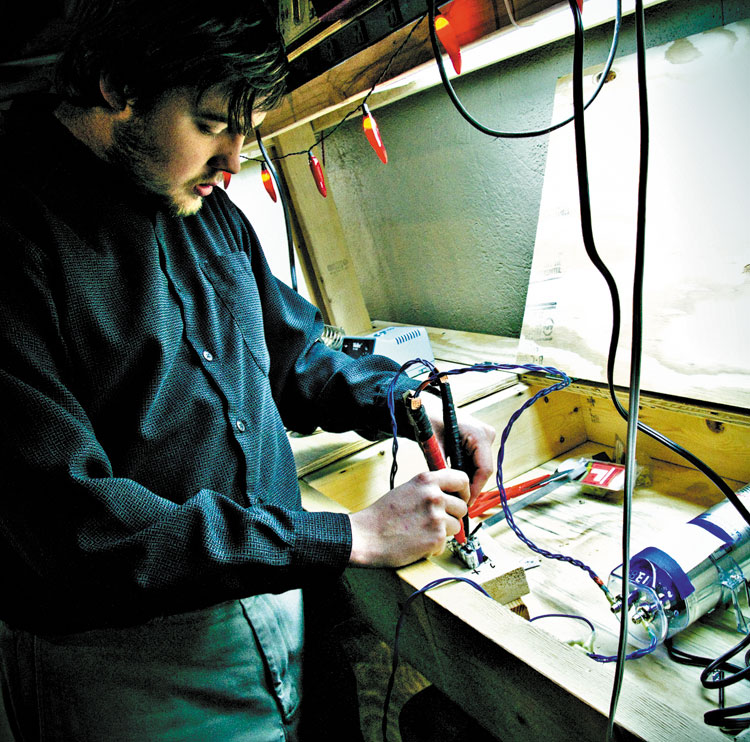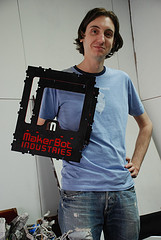
Almost every night of the week, LVL1’s 2,000-square-foot communal workshop is a hive of tinkering, socializing and building. Oscilloscopes, wave-form synthesizers and multi-meters, all donated by members, line the shelves and tables inside the hacker space. Puffs of smoke and tiny explosions erupt from the poised tips of soldering irons. Hand-built robots click and flash. Musical instruments are modified, purposefully mangled and built from scratch. Consumer electronics have their warranties voided by simply being opened up, cheap broken toys are cannibalized for parts, and, above all, information, free and plentiful, is shared.
At a Tuesday night meeting, Tim Miller, a quiet, dark-haired network technician in his mid-20s, draws a rough sketch of a tree on the dry-erase board at the front of the room, adding a squiggle at the end of a branch near the top and stepping back into the crowd of half a dozen that has wandered over and gathered behind him.
He crosses his arms as the group considers the problem: At the end of a test flight, the computer payload for a robotic helium balloon that members of LVL1 designed has gotten stuck 80 feet in the air, tangled in the upper regions of a giant tree on a Christian dude ranch in Vernon, Ind. Somehow, the payload — a 12-pound mother-brain of chips and sensors about the size of a microwave — has to be retrieved so the data it has collected can be analyzed. Ideally, the payload can be installed beneath another balloon that, in the coming weeks, will attempt a record-setting flight across the Atlantic.
http://leoweekly.com/news/hacktory







